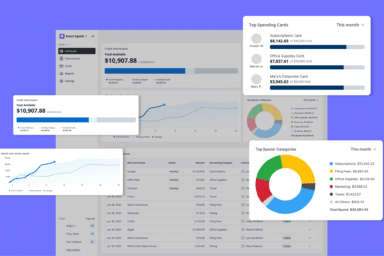Business Resiliency Planning for Law Firms – Step 3: The Elements of a Successful Plan
Aug 25, 2020
| 4 min readOver the past few weeks we’ve focused on business resiliency planning for law firms. The reason this is so important is because preparing for uncertainty builds business resiliency into your law firm and ultimately protects your firm’s reputation and bottom line in both the short term and the long term.
In Part 1 we discussed why it’s important to plan for future disruption and explored the many benefits of doing so. You learned that the downtime during the current pandemic is the perfect opportunity to create a business continuity plan that your firm can rely on if there’s a COVID-19 surge in your area or if another disaster strikes down the road.
Last week in Part 2 we focused on establishing a committee to create your firm’s resiliency plan and the importance of tasking that committee to identify your firm’s goals before creating the plan. The reason being that those goals, once identified, will necessarily inform every step the committee takes, from drafting the business resiliency plan, updating it as needed, and implementing it.
In today’s post, we’re going to talk about how to determine what the essential elements of your firm’s business resiliency plan should be. Every firm is unique both in terms of practice areas and business processes. As a result, every business resiliency plan will likewise be uniquely tailored to address – and maintain – the firm’s specific essential business processes and services.
Identify your firm’s primary functions
One of the top tasks of your firm’s business resiliency planning committee will be to identify your firm’s primary business functions. For many firms, these will include a number of different business processes that effect its employees and its clients. With that in mind, here are some of the top categories of business functions common to many law firms:
- Law firm marketing and public relations
- Lead management and intake
- Client intake and communication
- Case management
- Human resources
- Payroll
- Information technology.
Once your firm’s primary business operations have been identified, the next step is for the committee to identify the top threats to each of those functions. Of import is that different types of business disruptions will necessarily have varying degrees of impact on each identified business process.
For example, natural disasters may result in damage to the firm’s offices, employees’ homes, or both. The types and locations of the damage will obviously affect your firm’s operations differently, thus triggering only certain aspects of your firm’s resiliency plan. Other types of possible disruptions, such as pandemics, power and utility outages, and cyberattacks will similarly have disparate effects on varying aspects of your firm’s operations.
Prepare a recovery plan for each essential service
Once the committee has identified, analyzed, and documented the top threats to each business function, it’s time to move on to preparing a recovery plan for each essential service under each disaster scenario. The end goal is to ensure that no matter what type of disruption occurs or how it affects the firm, there is a recovery plan in place that will provide guidance in the midst of uncertainty.
The committee should focus on each business process and the different ways it will be affected in the event of different types of disasters. It will need to determine how that function will be maintained even if the firm faces disruption due to forces outside of its control.
For example, will your firm be able to keep the lines of communication open between its employees, the courts, and clients no matter what happens? Does your firm have technology in place that will allow convenient and immediate access to important case-related information even if employees are displaced from the office? If not, it may be time to replace the existing IT infrastructure with more modern cloud-based legal software in order to ensure that essential business operations are not disrupted.
What about the firm’s online presence? Can your firm’s website easily revised to reflect updated information regarding the impact of the unexpected event on your firm’s operations? Does your firm have online intake forms in place so that potential clients can retain your firm’s services no matter what the situation? If not, it may be time to reassess and update your firm’s website.
Once the committee has considered the various disaster scenarios and drafted a recovery plan for each element of your firm’s essential functions, your business resiliency plan will be well on its way to completion. Next week we’ll discuss the remaining steps the committee will need to take before finalizing and disseminating the plan. So check back then for Part 4 of this blog post series.
In the meantime, make sure to sign up for our upcoming webinar: “Adapt or Fail: Industry Changes Law Firms Can’t Afford to Ignore.”


